Introduction
As a botanist it was a wonderful experience to see a number of different spices grown on the Villa Vanilla plantation near Tulemar. In addition to Vanilla and Cacao (see my previous posts on these species), the plantation also grows and harvests Black Pepper, Chili Peppers and Cinnamon. Following is a brief description of these species and their biochemistry which is responsible for their natural products that make them valuable as spices. All photographs are my own and were taken in January, 2019.
Black Pepper
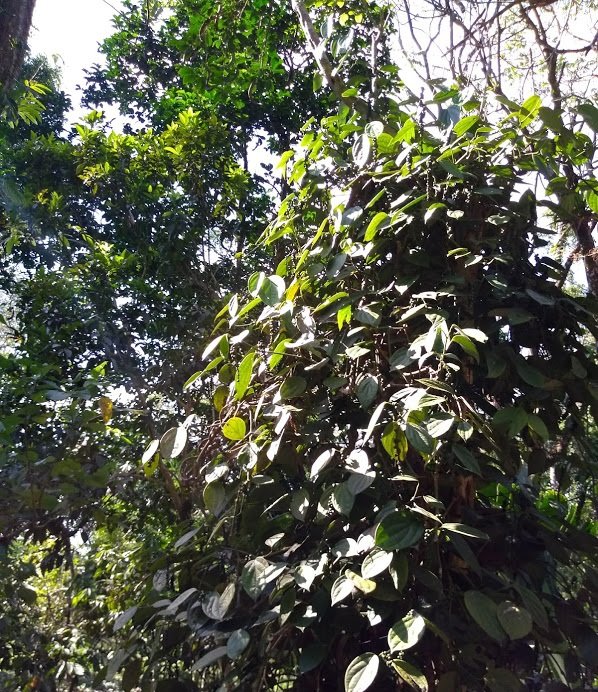
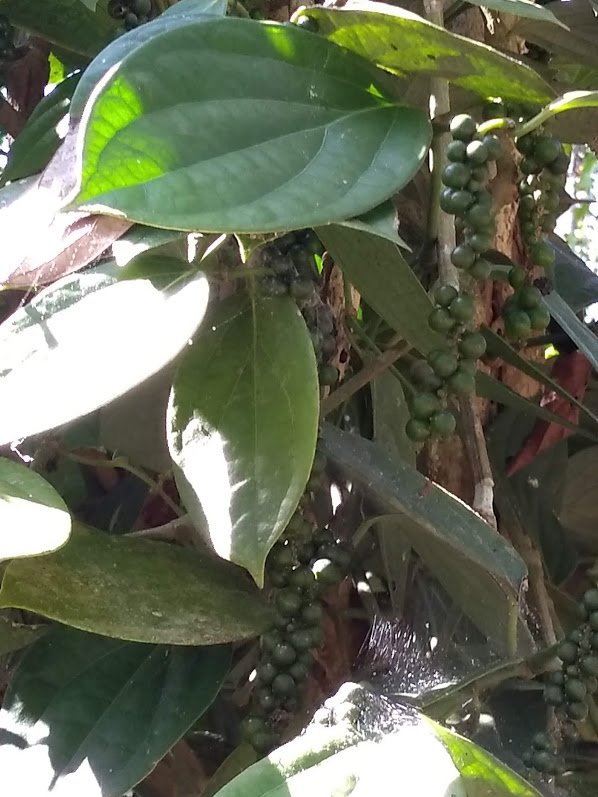
Black pepper - Piper nigrum at Villa Vanilla.
Piper nigrum is a member of the Piperaceae family of angiosperms and is the major source of pepper, a spice used as a seasoning. It is a perennial woody vine, producing fruiting spikes (drupes) with green fruit (peppercorns). The fruit are usually harvested while green and can give rise to green, black and white pepper products (see Black pepper - Piper nigrum for details)).
The main chemical ingredient of their peppercorns (green fruit containing a single seed) is the alkaloid compound piperine.
Piperine is synthesized in Piper nigrum via the amino acid lysine. Lysine is first converted to the diamine (polyamine) cadaverine by decarboxylation. Cadaverine is a foul-smelling compound contributing to the odor of rotting flesh and cadavers! Subsequently, cadaverine is metabolized to an amino aldehyde (catalyzed by the enzyme diamine oxidase), and the resulting aldehyde spontaneously cyclizes to yield delta1-piperideine, which is then further reduced to piperidine (Chopra et al. (2016)):
lysine -> cadaverine -> delta 1-piperideine -> piperidine
Piperidine is then condensed with the compound piperoyl-CoA to form piperine:
piperidine + piperoyl-CoA -> piperine + CoASH
The latter reaction is catalyzed by piperoyl-CoA: piperidine N-piperoyltransferase (piperidine piperoyltransferase)(Geisler and Gross (1990)).
Piperoyl-CoA is derived from 4-coumarate (Okwute and Egharevba (2013), Chopra et al. (2016)), an intermediate in lignin biosynthesis (see below for further details).
A host of isomers of piperine have been identified in the Piperaceae (Kato and Furlan (2007), Okwute and Egharevba (2013), Singh and Choudhary (2015)). Much less is known about how these isomers are biosynthesized, but many have potentially interesting pharmacological properties. For a recent, informative article on this subject, please see Could Isomerization of Alkaloids in Common Black Pepper (Piper nigrum) Provide New Leads for Pharmaceuticals?.
Chili Pepper
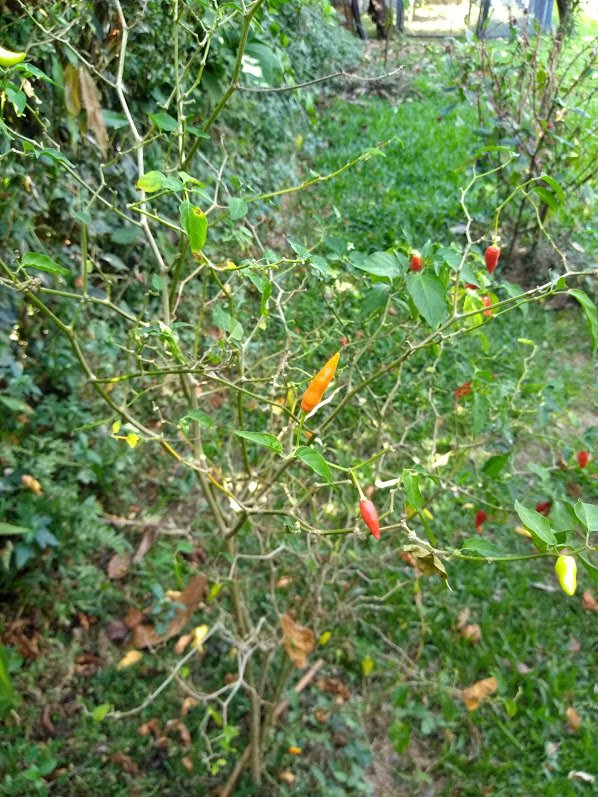
Chili pepper - Capsicum annuum at Villa Vanilla.
Capsicum annuum is a member of the Solanaceae family, and is thus closely related to tomato and potato. The key ingredient of chili pepper responsible for its "hot" flavor is the compound capsaicin. Cultivars of Capsicum annuum differ substantially in their capsaicin content, with sweet bell peppers and banana peppers lacking in this molecule.
Arce-Rodríguez and Ochoa-Alejo (2017) suggest that in Capsicum species the pathway of synthesis of capsaicin procedes via vanillin (and vanillylamine), involving the following steps:
phenylalanine -> cinnamate -> 4-coumarate -> 4-coumaroyl-CoA -> -> caffeoyl-CoA -> feruloyl-CoA -> vanillin -> vanillylamine
Vanillylamine is then conjugated with a branched-chain fatty acid to form capsaicin (see Arce-Rodríguez and Ochoa-Alejo (2017) and Kim et al. (2014) for details).
Capsaicin is synthesized by the acylation of the aromatic compound vanillylamine (derived from the phenylpropanoid pathway) with a branched-chain fatty acid by the catalysis of the enzyme capsaicinoid synthase (from: Arce-Rodríguez and Ochoa-Alejo (2017)).
Note that vanillylamine is derived from vanillin, the key component of vanilla (see Costa Rica - Part 4 - Vanilla)!
To the best of my knowledge the enzyme catalyzing the step feruloyl-CoA -> vanillin remains to be identified in Capsicum species. The sequencing of the hot pepper genome by Kim et al. (2014) may eventually facilitate identification of this putative enzyme (hydroxycinnamoyl-CoA hydratase lyase) and help clarify whether or not such an enzyme also catalyzes vanillin synthesis in Vanilla planifolia (see Costa Rica - Part 4 - Vanilla).
A transcription factor plays a key role in turning on the expression of capsaicinoid biosynthetic pathway genes (Arce-Rodríguez and Ochoa-Alejo (2017)) and variability in expression of this transcription factor may in part contribute to the differences in capsaicin content of different cultivars of Capsicum annuum (i.e. hot versus sweet peppers) in addition to variability in expression of capsaicinoid synthase (capsaicin synthase) (Kim et al. (2014)).
It is worth noting that the core of this pathway is central to the lignin biosynthesis pathway common to gymnosperms and angiosperms, and which likely evolved over 400 million years ago, prior to the Carboniferous period (Weng and Chapple (2010)):
phenylalanine -> cinnamate -> 4-coumarate -> 4-coumaroyl-CoA -> -> caffeoyl-CoA -> feruloyl-CoA -> ->
The intermediates of this lignin biosynthesis seem to have been recruited by many angiosperms for synthesis of secondary products like piperine in Piper nigrum, capsaicin in Capsicum annuum, vanillin in Vanilla planifolia, and cinnamon in Cinnamomum cassia (see below).
The center of origin of the Solanaceae has been the subject of much debate. Most studies suggest a center of origin of this family in South America. However, a recent study showed that a close relative of tomato, Physalis infinemundi, evolved near Antarctica more than 50 million years ago. At that time South America would have been close to Antarctica when the ancient supercontinent, Gondwana, was in its final stages of separation (Wilf et al. (2017), Lallensack (2017)).
Cinnamon

Cinnamon - Cinnamomum cassia (a member of the Lauraceae family) is cultivated at Villa Vanilla by growing the tree for a few years.
The tree is then "coppiced", that is the stems are cut near ground level. New shoots then form from the roots, replacing those that were cut (not shown).
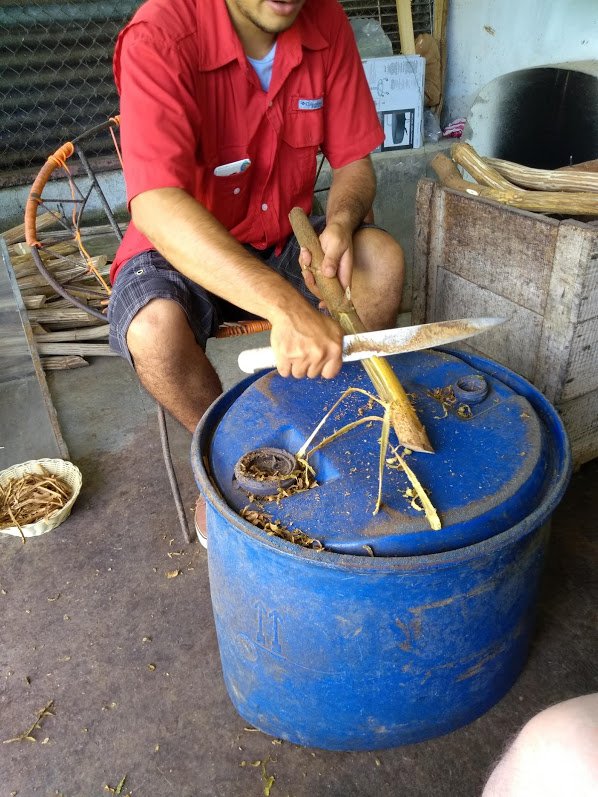
These new shoots are then cut, the greenish outer layer of the bark is removed with a machete, and then the inner bark is harvested in strips with the same instrument.
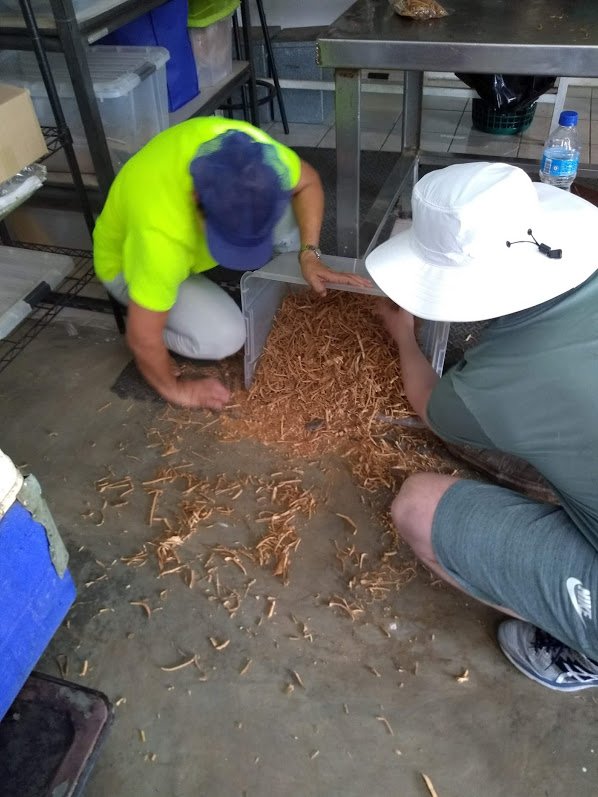
Inner bark shavings are subsequently air dried.
Cinnamaldehyde is the main flavor and aroma compound in cinnamon bark, and is proposed to be derived from phenylalanine by the following pathway, again drawing from intermediates in the early steps of the lignin biosynthesis pathway described above:
phenylalanine -> cinnamic acid -> cinnamoyl-CoA -> cinnamaldehyde
Cinnamon has been a valuable spice from ancient times, and was prized by ancient Egyptians and Romans.
References
Previous articles in this series:
Costa Rica - Part 1 - The Sloth Institute Costa Rica
Costa Rica - Part 2 - Scintillating Sunsets
Congratulations! Your high-quality natural products content was selected by a @nunesso curator and earned you a reward, in form of a 100% upvote and a resteem. Your article really stands out and is a great example of high-quality, well researched and supported infromation. Your article now has a chance to get curated and featured under the appropriate topic of our @nunesso blog. Thank you for participating in the #naturalproducts tag!
Thank you!
I Enjoyed reading about your trip from your perspective. I should make a pilgrimage to see spices in their natural habitat other than the grocery isle. Thanks for the citation!
Thanks. This was my first ever visit to Costa Rica and enjoyed it thoroughly. I would love to return in the rainy season (September) when more plants are in bloom.